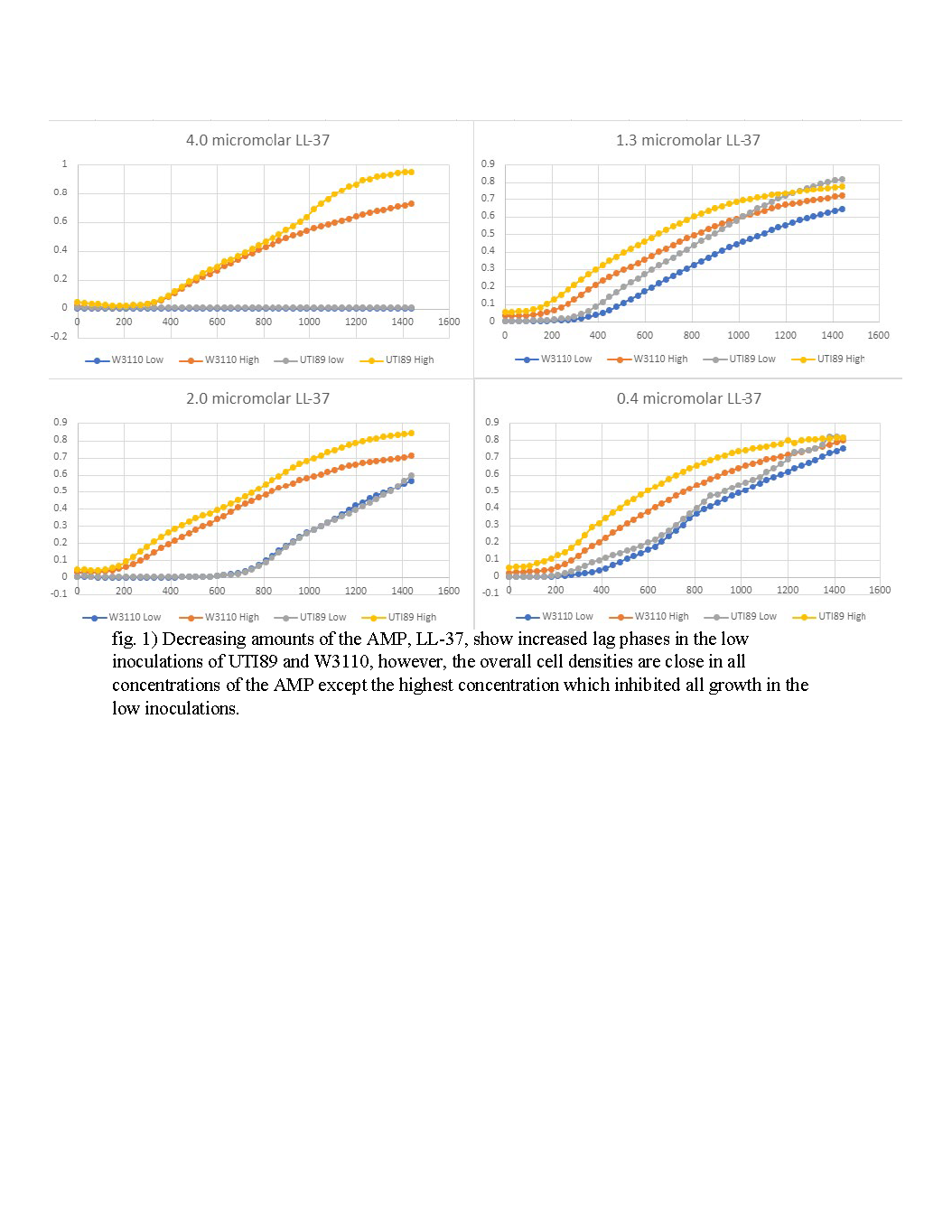Back
Poster, Podium & Video Sessions
MP02: Infections/Inflammation/Cystic Disease of the Genitourinary Tract: Kidney & Bladder I
MP02-02: Comparison of Uropathogenic and Non-Pathogenic Escherichia coli Growth Characteristics in the Presence of an Antimicrobial Peptide and Limiting Nutrient Availability
Friday, May 13, 2022
7:00 AM – 8:15 AM
Location: Room 225
Samuel Kusin*, Dallas, TX, Jacob Hogins, Richardson, TX, Philippe Zimmern, Dallas, TX, Larry Reitzer, Richardson, TX
- SK
Sam Kusin, BA
UT Southwestern
Poster Presenter(s)
Introduction: An important component of a urinary tract infection is survival and growth in urine prior to invasion of uroepithelial cells. Uropathogenic Escherichia coli (UPEC) grow faster and to a higher cell density in urine than non-pathogenic Escherichia coli (NPEC). Explanations for this difference are either UPEC ability to utilize low levels of nutrients in urine, or UPEC resistance to inhibitory factors, such as antimicrobial peptides (AMP). We examined UPEC and NPEC growth in medium with a limiting carbon/energy source, and in the presence of an AMP, and found that a UPEC strain handled each environment better than an NPEC strains.
Methods: The model UPEC strain UTI89 and the NPEC strain W3110 were grown in Luria-Bertani (LB) broth for 2 hours. Actively growing cells were centrifuged, washed twice to remove residual nutrients from the LB, and resuspended in a buffer before inoculation into a minimal medium containing varying concentrations of glycerol and the AMP LL-37 (cathelicidin). Bacteria were added to media in either high (1:20) and low (1:200) density, and grown for 24 hours in a 96-well plate at 37°C. Growth was continuously monitored in a gel plate reader and doubling times, CFU per mL (using OD600), final OD600, and change in OD600 were determined in triplicate.
Results: Low-density inoculation compared to high-density inoculation resulted in less resistance to LL-37, slower growth, and less growth. Increasing LL-37 concentrations slowed the growth rate, but did not affect the final cell density. Variation of limiting glycerol affected the final cell density as expected. Limiting glycerol enhanced the effectiveness of LL-37 (cathelicidin), which implies that nutrient availability affects AMP sensitivity.
Conclusions: Compared to the NPEC strain, the UPEC strain UTI89 has adaptive mechanisms to grow in a low nutrient environment and resist AMPs. LL-37 affected the growth rate, while nutrient limitation affected the final cell density. The synergism between nutrient limitation and LL-37 may result from affecting different aspects of growth, and is more potent at low bacterial densities.
Source of Funding: None

Methods: The model UPEC strain UTI89 and the NPEC strain W3110 were grown in Luria-Bertani (LB) broth for 2 hours. Actively growing cells were centrifuged, washed twice to remove residual nutrients from the LB, and resuspended in a buffer before inoculation into a minimal medium containing varying concentrations of glycerol and the AMP LL-37 (cathelicidin). Bacteria were added to media in either high (1:20) and low (1:200) density, and grown for 24 hours in a 96-well plate at 37°C. Growth was continuously monitored in a gel plate reader and doubling times, CFU per mL (using OD600), final OD600, and change in OD600 were determined in triplicate.
Results: Low-density inoculation compared to high-density inoculation resulted in less resistance to LL-37, slower growth, and less growth. Increasing LL-37 concentrations slowed the growth rate, but did not affect the final cell density. Variation of limiting glycerol affected the final cell density as expected. Limiting glycerol enhanced the effectiveness of LL-37 (cathelicidin), which implies that nutrient availability affects AMP sensitivity.
Conclusions: Compared to the NPEC strain, the UPEC strain UTI89 has adaptive mechanisms to grow in a low nutrient environment and resist AMPs. LL-37 affected the growth rate, while nutrient limitation affected the final cell density. The synergism between nutrient limitation and LL-37 may result from affecting different aspects of growth, and is more potent at low bacterial densities.
Source of Funding: None


.jpg)
.jpg)